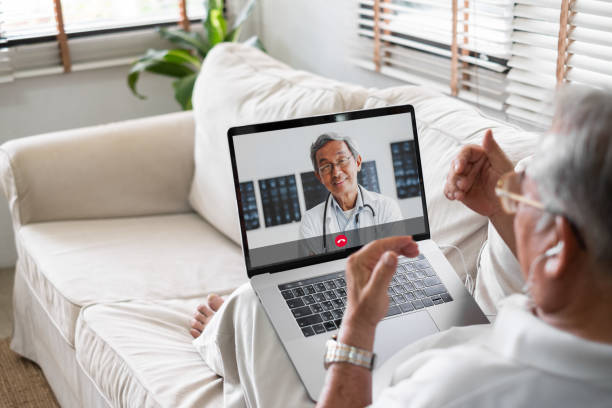Advanced care at home (ACAH) also known as acute hospital at home, are programs that deliver hospital-level care in the home for patients with complex conditions. They often use a combination of telehealth, in-home services, and remote patient monitoring (RPM). This article explores what ACAH programs cover, who qualifies, and how RPM technology plays a critical role in delivering safe, scalable care.
What do Advanced Care at Home Programs Cover?
Advanced care at home offers an alternative to traditional inpatient hospital stays. These programs provide comprehensive medical services tailored to a patient’s condition through a coordinated care plan.
The core services typically offer the following services.
- Telehealth consultations and continuous monitoring
- Remote vital sign tracking via FDA-cleared devices
- In-home medication management
- Lab draws and diagnostic testing
- Physical, occupational, and speech therapy
- Mobile imaging and ultrasound
- Behavioral health support, social work, and specialty consults
The goal is to improve patient experience and outcomes while lowering costs and reducing hospital utilization.
Eligible Conditions
Advanced care at home typically require hospital-level care but are stable enough to be monitored and treated at home. Common qualifying conditions are:
- Congestive heart failure
- Asthma
- COPD
- Pneumonia
- Dehydration and gastroenteritis
- Cellulitis or soft tissue infections
- Complicated urinary tract infections (UTIs)
Advanced Care at Home and RPM
Remote patient monitoring technology allows clinicians to continuously monitor patients from a distance, improving care coordination and allowing for early interventions. Recent research has explored how advanced care at home programs have used RPM to prevent unnecessary hospital readmissions and enhanced patient recovery during the COVID-19 pandemic.
Mayo Clinic analyzed data from over 7,000 patients across 41 U.S. states. Their RPM program reported the following results.
- High patient participation and engagement rates: 80% of low-intensity enrollees and 78% of high-intensity participants digitally engaged for at least one day.
- Adherence to care plan: 61.6% among low-intensity patients and 72.5% among high-intensity patients.
- Low levels of hospitalization: 9.4% of patients were admitted to the hospital within 30 days of enrollment or discharge.
- Low 30-day mortality: 0.4%, with 27 total deaths, all of whom were patients with high-risk factors.
The Mayo program had been using RPM to manage chronic conditions such as heart failure and COPD. The health system rapidly adapted and scaled the program to meet specific needs of patients during the pandemic. These findings show the safety, efficacy, and positive outcomes were achieved through a well-designed RPM program.
Scaling At Home Remote Patient Monitoring Programs
During the COVID-19 pandemic, many healthcare organizations quickly scaled their advanced care at home RPM programs for patients. A study published in the American Journal of Managed Care evaluated the feasibility of scaling an ACAH program for patients requiring hospitalization. Kaiser Permanente advanced care at home and scaled up to an average of 12.7 patients, peaking at 22 patients per day.
A total of 1005 patients were admitted to the program. The program scaled over three stages, with decreases in rehospitalization, from 17.5% to 10.8%, with shorter lengths of stay and a median length of stay decreasing from 7.43 days to 5.46 days. Lower readmission rates continued compared to earlier stages, and dropped from 9.79% to 9.24%.
They also found that patients treated at home were 64% less likely to experience delirium compared to admitted patients. The study demonstrates the feasibility of scaling remote patient monitoring within an integrated delivery system to create significant inpatient capacity.
Understanding Advanced Care at Home
Advanced care at home programs are an innovative approach to healthcare delivery, particularly for patients with complex conditions. ACAH programs offer a viable alternative to traditional inpatient hospital stays, fostering improved patient experiences, outcomes, and cost savings. Remote patient monitoring plays a pivotal role in these programs with effective care coordination, monitoring, and intervention.
If you are a chronic care, telehealth, RPM services, or software company member, book a consultation and free demo to learn more about leveraging Tenovi’s FDA-cleared remote patient monitoring devices and data aggregation solutions.


